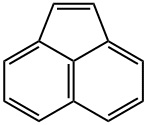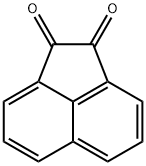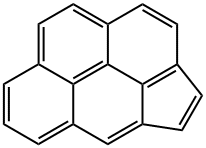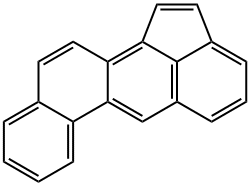PRODUCT Properties
| Melting point: | 78-82 °C(lit.) |
| Boiling point: | 280 °C(lit.) |
| Density | 0.899 g/mL at 25 °C(lit.) |
| vapor pressure | 6.68 at 25 °C (gas saturation-HPLC/UV spectrophotometry, Sonnefeld et al., 1983) |
| refractive index | 1.6360 (estimate) |
| Flash point: | 122°C |
| storage temp. | room temp |
| solubility | Soluble in ethanol, ether, and benzene (U.S. EPA, 1985) |
| form | Solid |
| color | Yellow |
| Specific Gravity | 0.899 |
| Water Solubility | 3.93mg/L(25 ºC) |
| BRN | 774092 |
| Henry's Law Constant | 1.14 at 25 °C (gas stripping-UV spectrophotometry, Warner et al., 1987) |
| Stability: | Stable. Incompatible with oxidizing agents. |
| InChIKey | HXGDTGSAIMULJN-UHFFFAOYSA-N |
| CAS DataBase Reference | 208-96-8(CAS DataBase Reference) |
| EPA Substance Registry System | Acenaphthylene (208-96-8) |
Description and Uses
Acenaphthylene is a PAH with three aromatic rings. It is an intermediate chemical for the manufacture of dyes, soaps, pigments, pharmaceuticals, insecticides, fungicides, herbicides, plant growth hormones, naphthalic acids, naphthalic anhydride (pigments), and acenaphthylene (resins) and is used to manufacture plastics. The largest emissions of PAHs result from incomplete combustion of organic materials during industrial processes and other human activities. These include (1) processing of coal, crude oil, and natural gas, including coking, coal conversion, and petroleum refining; (2) production of carbon blacks, creosote, coal tar, and bitumen; (3) aluminium, iron, and steel production in plants and foundries; (4) heating in power plants and residences and cooking; (5) combustion of refuse; (6) motor vehicle traffic; and (7) environmental tobacco smoke.
Polycyclic aromatic hydrocarbons as carcinogenic
Safety
| Symbol(GHS) |  GHS07 |
| Signal word | Warning |
| Hazard statements | H302-H315-H319-H335 |
| Precautionary statements | P261-P264-P270-P301+P312-P302+P352-P305+P351+P338 |
| Hazard Codes | Xn,N,F,T,Xi |
| Risk Statements | 22-36/37/38-67-65-50/53-38-11-39/23/24/25-23/24/25-20 |
| Safety Statements | 26-36/37/39-62-61-60-45-36/37-16-7-37/39-33-25-9 |
| RIDADR | UN 1145 3/PG 2 |
| WGK Germany | 3 |
| RTECS | AB1254000 |
| TSCA | Yes |
| HS Code | 29029090 |
| Hazardous Substances Data | 208-96-8(Hazardous Substances Data) |
| Toxicity | LC50 (21-d) for Folsomia fimetaria 145 mg/kg (Sverdrup et al., 2002). |




